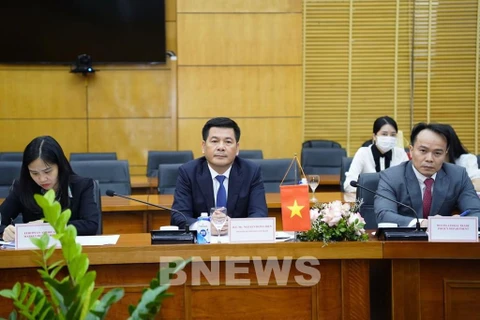Hanoi (VNA) – Despite the negative impact of the COVID-19 pandemic, Vietnam’s exports to the European Union (EU) have grown positively as local businesses have effectively exploited incentives from the EU-Vietnam Free Trade Agreement (EVFTA) which took effect in August 2020.
Statistics from the Ministry of Industry and Trade (MoIT) showed that the two-way trade turnover between Vietnam and EU reached 57 billion USD last year, up 14.5% over the same period in 2020. Trade turnover between the two sides in the first half of 2022 increased by 15% year-on-year and recorded a trade surplus of Vietnam to the EU rose by nearly 40%.
Agro-forestry-fisheries products, which enjoy great incentives from the EVFTA, have reported impressive growth.
The total export turnover of Vietnam's key agricultural products, including coffee, cashew nuts, vegetables, pepper, rice and tea, to the EU market in the 11 months of 2021 hit 2.2 billion USD, up 10.1% against the same period in 2020.
The EU is one of the largest importers of Vietnamese agricultural products, accounting for 13.7% of the country’s total export turnover of products.
Economists forecast that exports continue to expand in EU counties this year on the growth momentum in 2021. Some industries such as garment and textile, footwear and electronic components have expected growth of more than 10% compared to 2021.
It is said that Vietnamese firms now hold great chances to boost shipments to the EU since the 27-member EU with a combined population of over 500 million has huge demand for imports and businesses are gradually becoming familiar to the commitments under the EVFTA.
Le Hang, deputy director of the VASEP.PRO Centre under Vietnam Association of Seafood Exporters and Producers (VASEP), said the percentage of Vietnamese exporters using the certification of origin to reap preferential duties provided by the EVFTA expanded from 14.8% in the first year to 20.7% in the second year, reflecting that enterprises have gradually taken advantage of the tariff commitments of the agreement.
Luong Hoang Thai, Director of the Multilateral Trade Policy Department under the MoIT agreed, saying that the percentage has risen remarkably in the first sixth months of this year to over 32%, or one-fourth of Vietnamese exports to the EU have benefited from certain forms of preferential treatment under this new-generation FTA.
In accordance with the agreement, the EU will eliminate about 85.6% of import tariffs on Vietnamese goods, equivalent to 70.3% of the country’s revenue from exports to the EU. Almost all Vietnam’s exports to the EU will be eligible for import tariff elimination within seven years of the deal taking effect.
According to agricultural expert Dang Kim Son, former director of the Institute of Policy and Strategy for Agriculture and Rural Development, the EVFTA has helped open up an opportunity for Vietnam’s exports to a new market with higher quality standards.
However, he said that Vietnam still has a lot of work to do to be able to penetrate deeply into this market. Son emphasised the need for the agricultural sector to apply science and technology advances to improve the products’ quality, meeting the technical barriers and requirements of markets.
Ngo Chung Khanh, deputy director of the Multilateral Trade Policy Department under the MoIT, said EU and Vietnam markets are complementary to each other. However, the competitiveness of Vietnamese goods is still lower than many competitors in terms of price although many of them enjoyed preferential tariffs when the EVFTA came into effect, he said, stressing that the problem needs to be resolved soon.
Khanh cited shrimp as an example. Although enjoying zero percent tax, the price of Vietnam’s shrimp exports in the EU market is higher than that of Ecuador, India due to rising logistic costs, making it difficult for the country to expand its market share./.























